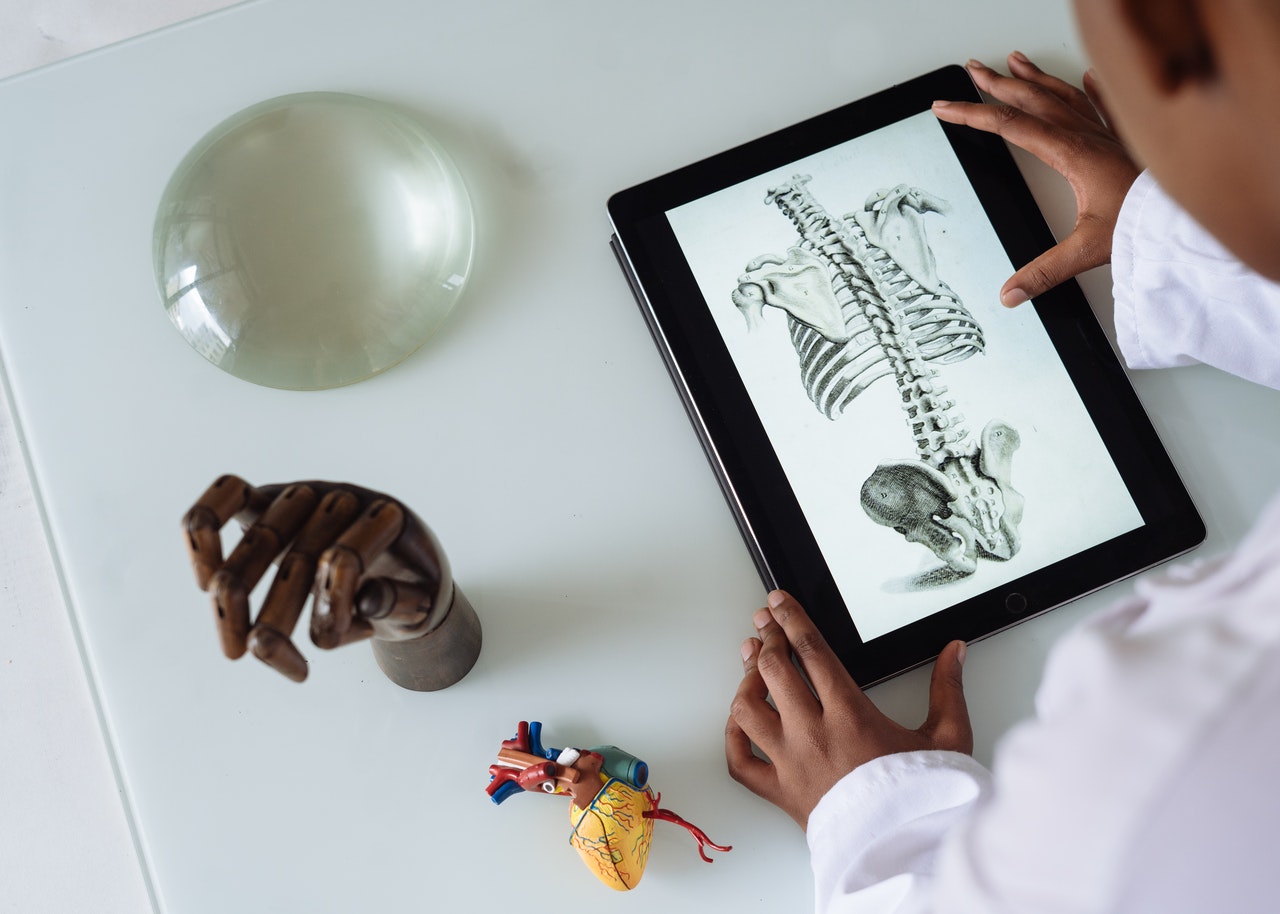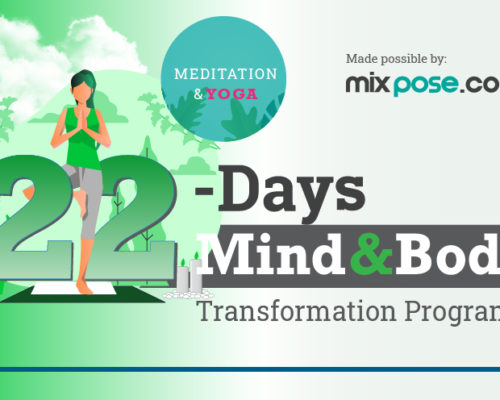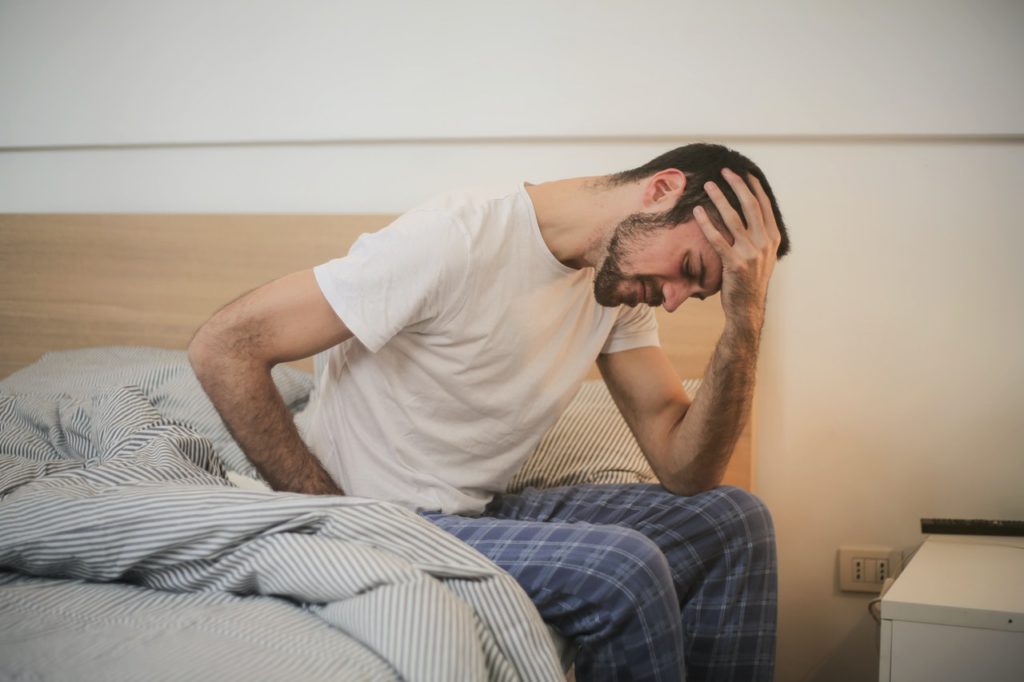
It usually starts with a sniffly nose and a mild throat tickle. Cut to 24 hours later: you’re fetal-positioned in bed, surrounded by mountains of crumpled tissues, and internally cussing the coworker who infected you. Being sick is troublesome to say the least, especially when all you want is to feel better and get back into the swing of your daily routine. Although exercise can help to boost your immune system and quicken your recovery process, it is not always the best option in the face of certain illnesses. It is proven that yoga can do wonders for your health and well-being, but is it always advisable to practice yoga when you’re sick?

The “Neck Check”
Determining whether practicing yoga – or any form of exercise – is advisable is not exactly a clear-cut ruling. Thankfully, medical experts have designed a rule of thumb for just this predicament: the neck check. The neck check is a self-check tool used to assess your illness symptoms. Conclusive findings from the neck check will help you determine whether or not you are fit to exercise. If all your symptoms are expressed above the neck (e.g., runny nose, sore throat, sneezing, nasal congestion), this means that you are most likely cleared for a light workout. However, if your symptoms occur below the neck (stomach pains/discomfort, cough, body aches, congestion within the chest), this is an indication that you should avoid physically exerting yourself and should instead continue to rest and heal. It is also highly ill-advised to exercise if you are experiencing a fever, chills, and/or aches. Generally speaking, the neck check approves exercise for those suffering a mild to moderate case of the common cold. Beyond utilizing the neck check, you should always listen to your body and do what you feel is best for your recovery. It is never a good idea to over-exert yourself when you are battling an illness, as this can exacerbate and worsen your condition. If you feel well enough to do yoga, be sure to skip the more intense, cardio-centric sequences and focus on the gentler, more restorative aspects of yoga. The great thing about yoga is that you can always modify a pose or sequence if needed!
How can yoga help in the healing process?
Yoga is chock-full of benefits, even for healthy individuals! Some of these benefits can be particularly helpful for those who are feeling under the weather, including:
- Boosts the immune system: practicing yoga leads to a decrease in stress hormones, which correlates to the state of one’s immune system. Less stress hormones and more physical activity equates to a stronger immune system.
- Helps to open the sinuses and clear congestion (yogic breathing techniques are great for this!)
- Promotes circulatory health: manages and promotes the circulation of white blood cells, which are essential for recovery when battling an illness.
- Pain reduction and management: yoga can do wonders for any body aches you may be experiencing in the midst of a cold or flu.
Yoga Poses to Try When You’re Under the Weather
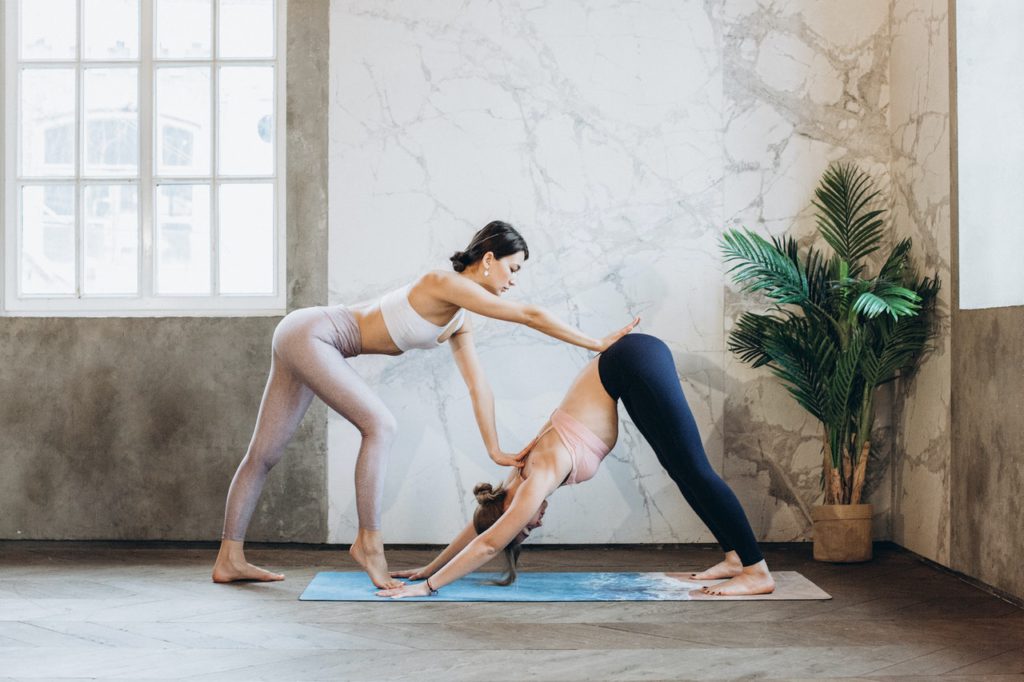
Downward-Facing Dog Pose: great for transporting white blood cells throughout the body, and for congestive relief
- Begin by entering into Tabletop Pose, propping yourself up on hands and knees. Ensure that your hands are stacked under your shoulders, and your knees are stacked under your hips.
- Tuck your toes in, and begin shifting your weight onto the palms of your hands. Then, on your next exhalation, lift your knees off the mat. From here, lift your hips up higher, as though you are attempting to touch the ceiling. As you adjust into this position, you may maintain a slight bend in your knees.
- Once you have settled into Downward-Facing Dog, you may attempt to straighten your knees out. However, if you find this challenging, you should continue to bend your legs slightly, as straightened legs are not a requirement for this pose.
- At this point, your body should resemble a triangular slope. You may remain in this pose for a minute or two, depending on how comfortable you feel. When you are ready to release, slowly bend your knees and return them to the mat. From here, you can enter Child’s Pose.
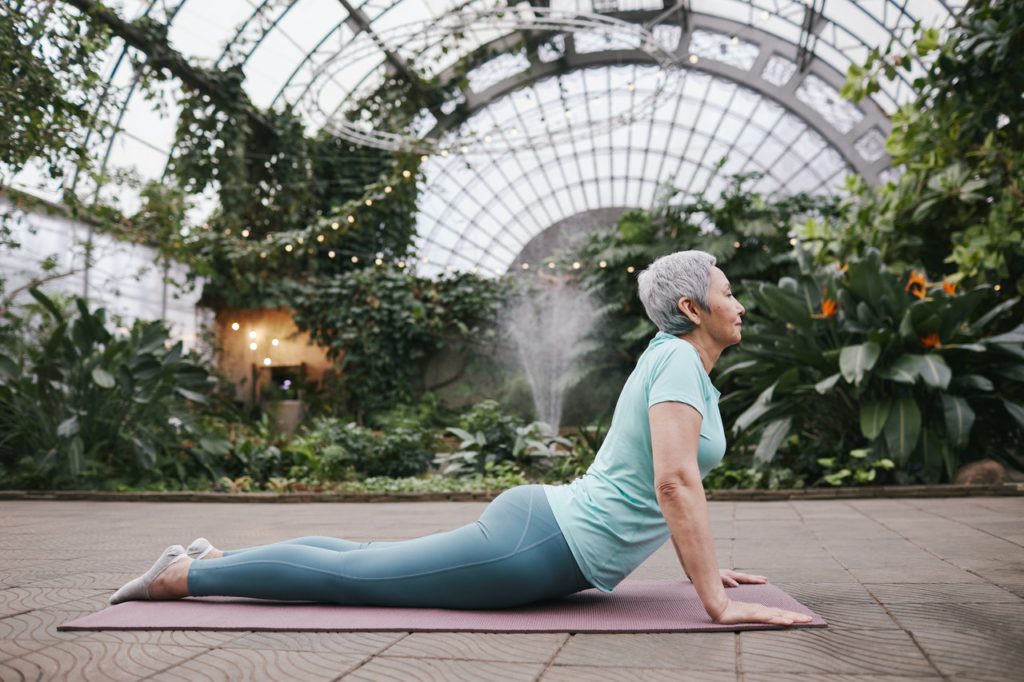
Cobra Pose: this pose is great for combatting congestion as it opens up the airways. Practicing Cobra also stimulates the thymus gland. The thymus gland is responsible for the production of T-cells, a type of white blood cell which fights infection.
- Begin by coming down to your mat and laying flat on your stomach. Then, place your palms flat down on either side of your armpits and attempt to tuck your elbows closer to your sides.
- On your next inhalation, push off with your palms and lift your chest off the mat. Make sure your elbows are still tucked at your sides, and that your shoulders are rolled back.
- From here, you can lift your chest further up off the mat to create a curved spinal arch. If attempting to lift your chest higher up causes any pain or physical distress, do not push yourself. Remain at a height in which you feel most comfortable.
- You may remain in this pose for up to 30 seconds before lowering yourself back down. You may then cycle through the pose again, or move on to a different position.
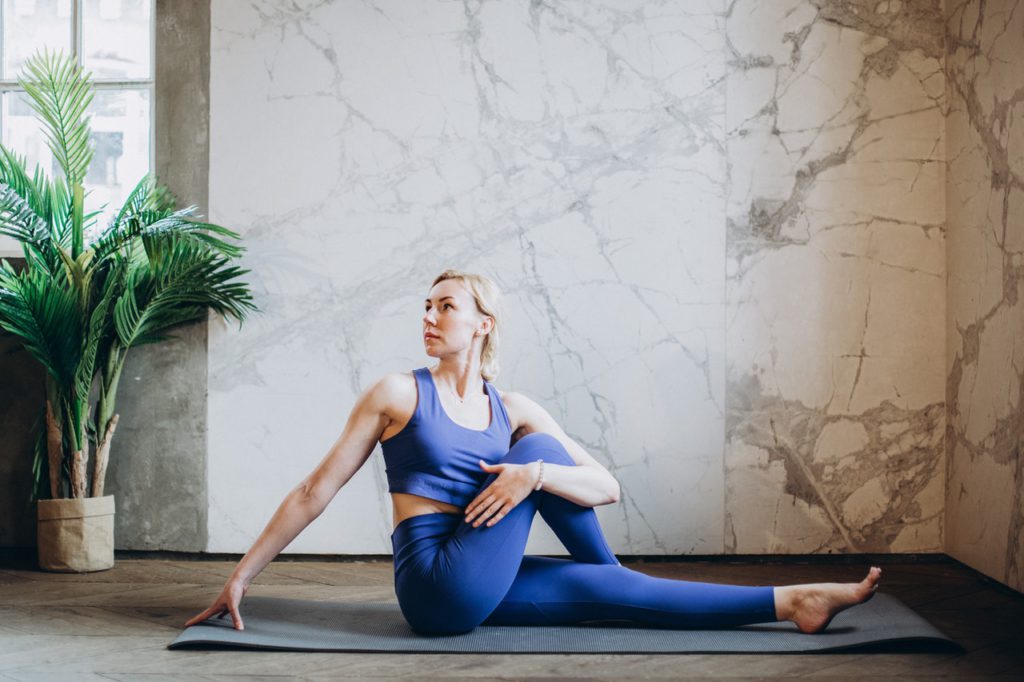
Seated Spinal Twist Pose: this pose promotes digestive health, which can serve sick yogis well by banishing toxins from the body. Additionally, it aids in the process of oxygenating blood, and subsequently, ideal internal organ health.
- Begin by taking a seat on your mat, allowing your legs to straighten out in front of you.
- From here, bend your right leg and cross it over your straightened left leg. You may place your right foot beside your left thigh or knee. Once your right leg is crossed over, you can bend your left knee, positioning your left foot near your right buttock. If you’d prefer, you can also allow your left leg to remain straight throughout the pose.
- Place your right palm behind you; you will be using this arm to help you remain upright and steadied. Straighten your left arm and reach for the ceiling with it. Then, twist your body towards the right and hook your left elbow around your bent right knee. Following this, you should feel a nice stretch.
- Continue to breathe through this pose, rotating your upper body further towards the right with each exhalation. Make sure that your spine is straight and that your hips are evenly squared.
- Remain in this pose for a few breaths. When you are ready to release, begin by unhooking your left arm, then proceed to untwist your legs. Once you’ve returned to your initial position, you can repeat this pose on the other side.

Yoga can be a great way to regain your strength and purge your body of toxins. With that in mind, you should move cautiously and gently so as not to further intensify your symptoms. Choose gentle and restorative yoga poses to practice until you’re back to your healthy self. Remember, you don’t need to be drenched in sweat or feel your heart pump out of your chest in order to achieve the health benefits from a yoga session!
